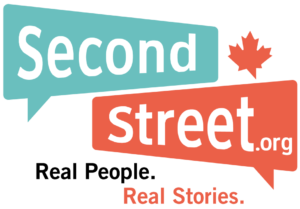TELEGRAPH-JOURNAL: New Brunswick workers – not government employees – feeling pandemic’s economic pain
By: Paige MacPherson
If you or someone you know has lost their job or taken a pay cut as a result of the COVID-19 shutdown, you aren’t alone. But one segment of society – government employees – have been immune to the widespread economic pain in New Brunswick and across Canada, according to a new policy brief by SecondStreet.org.
When it quickly comes time for taxpayers to pay the piper, collective debt and debt interest payments will be higher because of it. SecondStreet.org found, through Freedom of Information requests filed with the federal and provincial governments and 13 municipalities, that in almost every case, governments have not reduced employee pay due to COVID-19. SecondStreet.org asked for data specifically on the last pay reductions negotiated with various government employee bargaining units. That would not include politicians or political staff.
In many cases governments had never curbed employee pay as far back as the data was made available. In New Brunswick, the data dated back to the 1970s, and there have been no pay reductions over the last 50 years. Outside of government, many job creators have had to go beyond wage reductions, cutting jobs altogether. Irving Oil laid off 173 people in New Brunswick this past July, with most of those jobs in Saint John. That same week, Organigram Inc., a cannabis company based in Moncton, cut 220 jobs. In another hit to Moncton, UPS laid off 168 people at its call centre. Contrast that with Moncton’s municipal government, which indicated to SecondStreet.org that it has never, for any reason, reduced employee pay. It’s not unheard of for governments to roll back wages. It’s just exceedingly uncommon. Across the bridge in Prince Edward Island, the government told SecondStreet.org that it reduced employee pay most recently in 1994.
This isn’t exclusively a matter of fairness. Governments have already seen their revenues hit significantly. Prior to the COVID-19 economic shutdown, New Brunswick Premier Blaine Higgs and Finance Minister Ernie Steeves had set the province on a laudable path of debt reduction.
The pandemic shifted political focus away from balanced budgets everywhere. But the painful smack of COVID-19’s economic shutdown makes New Brunswick’s fiscal situation more urgent.
Even during the pandemic, New Brunswick felt the weight of its government’s debt – which, at close to $14 billion, is the largest in the Maritimes. Auditor General Kim MacPherson said it meant New Brunswick had limited flexibility when responding to the pandemic. As Canada’s federal debt nears $1 trillion for the first time, reliance on Ottawa is precarious. There too, the government must look at options to reduce costs.
At the federal level, the government has allowed 76,804 employees to take months off work during the pandemic, fully paid. This has cost taxpayers an estimated $623 million. Conversely, other Canadians who were not working collected the Canada Emergency Response Benefit (CERB), a maximum of $2,000 per month. Incredibly, the federal government even negotiated a pay increase for its employees who belong to the largest bureaucrat union – the Public Service Alliance of Canada. The gap between government employees and other workers was wide before the pandemic. A Fraser Institute report released in January showed that government employees enjoy an average 11.9 per cent wage premium over their counterparts in the private sector, after controlling for socioeconomic factors.
Government employees in New Brunswick were also six to seven times less likely than their private-sector counterparts to lose their jobs (pre-COVID). The pandemic, followed by a fall election, has blurred the importance of reducing the province’s debt. But it is still critical. Bringing government employee pay in line with counterparts elsewhere in the province is a viable policy option the New Brunswick government could explore. It could help address the government’s sizeable debt while minimizing the impact on services like libraries and hospitals.
The typical refrain from government employee unions is that contracts can’t be opened up. But countless workers across Canada, outside of government, agreed to open up their own contracts due to COVID-19 because otherwise their employers would be forced to make layoffs.
No one rejoices in pay reductions, but while workers and business owners across New Brunswick have had to make challenging decisions, it’s hard to see why government employees should be immune to reality.
Paige MacPherson is a contributor to SecondStreet.org and a policy and communications professional based in Halifax.
This column ran in The Telegraph Journal September 14th, 2020. To view article – click here.
You can help us continue to research and tell stories about this issue by making a donation or sharing this content with your friends. Be sure to sign up for our updates too!


